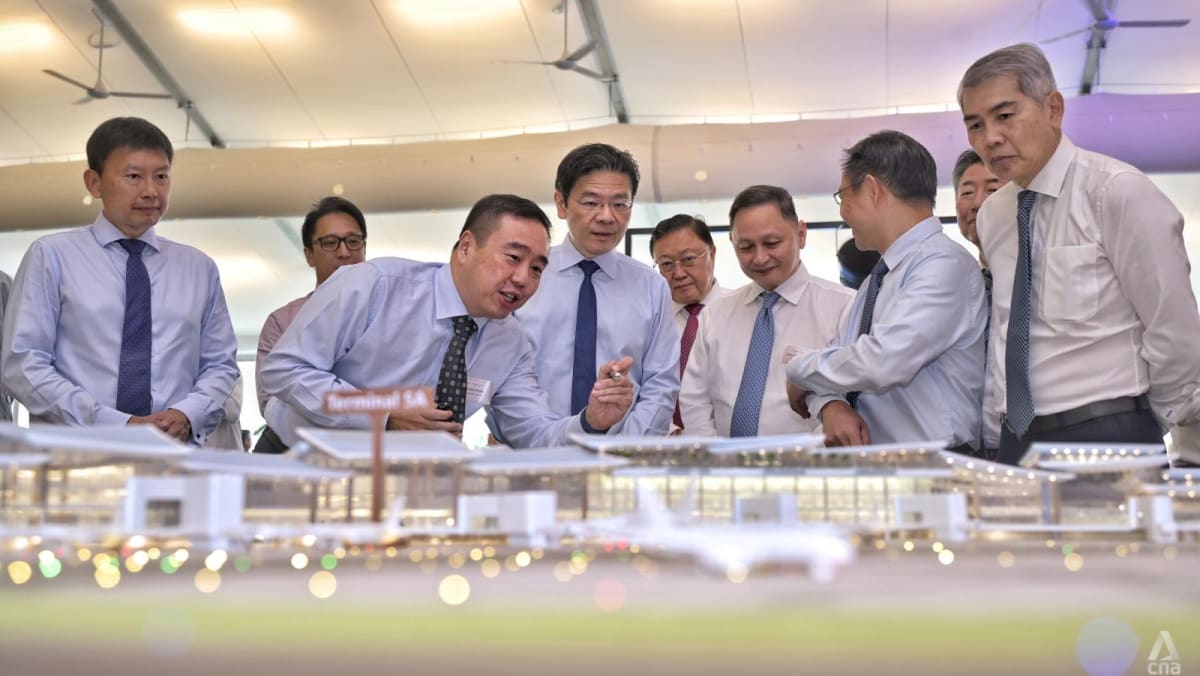The distance that passengers have to walk, however, will still be comparable to what they would cover in the current terminals, given the network of travellators and trains.
Most passengers arriving in Singapore will be able to hop onto a taxi or MRT within 30 minutes after leaving their aircraft, said CAG chief executive officer Yam Kum Weng during his speech at the groundbreaking ceremony.
He added that transfer passengers in T5 can connect to another flight in under an hour, faster than the current transfer times.
There will be a separate train service from Terminal 5 to Terminal 2 via a 2.5km underground link between the terminals, which began construction in 2024.
The roof of T5 will feature overlapping “roof leaves” with varying heights, which will create “a variety of spaces that are more human scale”, said CAG in material provided to the media.
The baggage claim hall will feature “vertical gardens”, while the departure pick-up point will feature a roof that allows natural light to filter through.
“Combined with natural light and landscaping at appropriate spaces, the terminal will have the familiar cosy, yet uplifting feel that Changi is known for,” said CAG.
The Changi East development that T5 is located in will also feature the future Changi East Urban District, which will serve as a “vibrant business and lifestyle destination” and the future Changi East Industrial Zone, said CAG.
The entire Changi East development, which includes T5, is expected to run into “tens of billions”, it was reported in 2018.
The Changi Airport Development Fund will be topped up by S$5 billion to support this.
